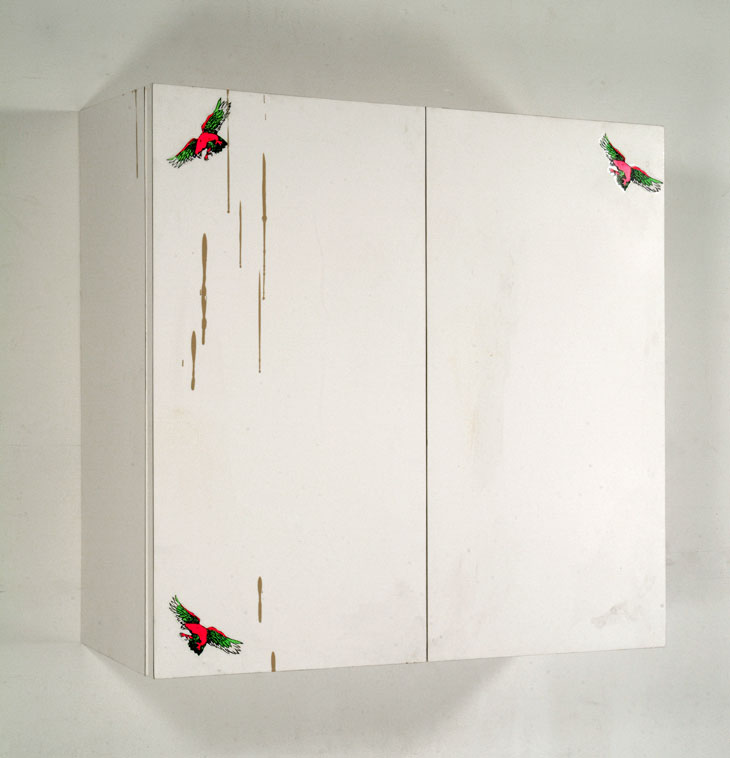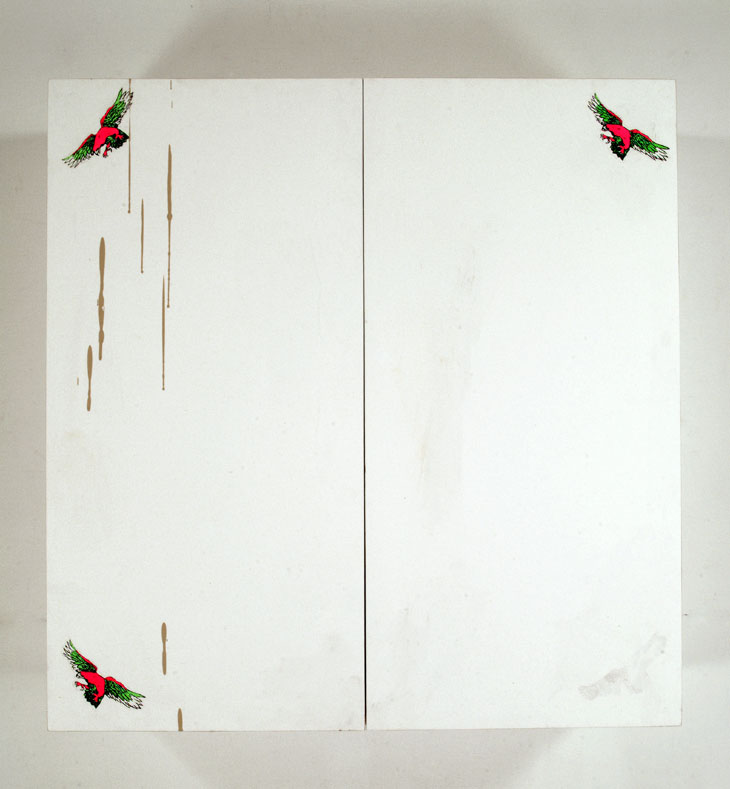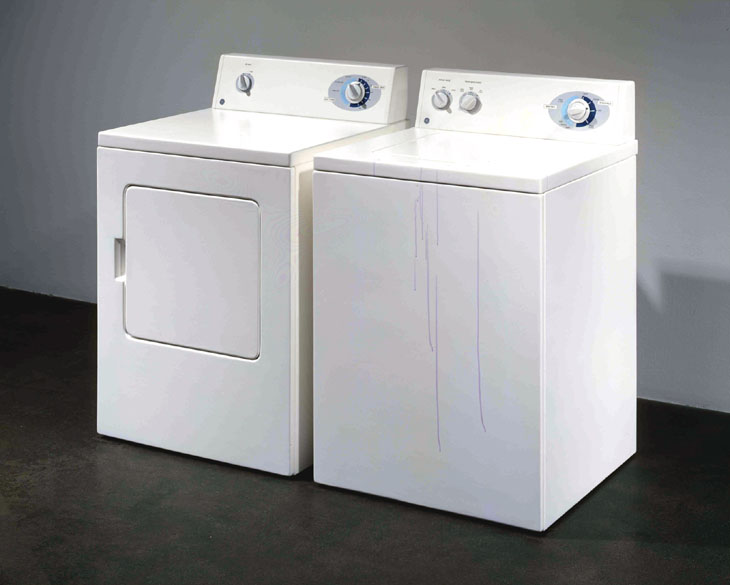


ARTIST:
Kaz Oshiro
Kaz Oshiro is a master of deception. His works posit ordinary objects with a humble simplicity. Washing machines, kitchen cabinets, stereo speakers, and trashcans are presented with mundane matter-of-fact-ness ― bland commercial components, bearing the marks of their habitual use. Oshiro’s forms, however, are not usual household appliances: they are actually three dimensional hyperrealist paintings. Each of Oshiro’s works is assembled from stretched canvas, expertly faux finished and adorned with real fixtures such as handles and decals. Through openings in the back of each work, Oshiro reveals the secret of their making.
In combining sculpture and painting, Oshiro considers his work as dissociated from both disciplines. Instead he describes his practice as “postmodern photographyâ€, creating provocative instances of perception which simultaneously confuse and expose artifice and reality. Equally influenced by Minimalism and Pop art, Oshiro uses these references to reinterpret the traditional genre of still-life. Like 17th century paintings of flowers and fruit, Oshiro’s contemporary emblems of status symbol and commodity invoke a transitory mysticism in their contrived illusion. In replicating the quotidian, Oshiro conjures a magic in the in the experience of everyday banality. Kaz Oshiro is a master of deception. His works posit ordinary objects with a humble simplicity. Washing machines, kitchen cabinets, stereo speakers, and trashcans are presented with mundane matter-of-fact-ness ― bland commercial components, bearing the marks of their habitual use. Oshiro’s forms, however, are not usual household appliances: they are actually three dimensional hyperrealist paintings. Each of Oshiro’s works is assembled from stretched canvas, expertly faux finished and adorned with real fixtures such as handles and decals. Through openings in the back of each work, Oshiro reveals the secret of their making.
In combining sculpture and painting, Oshiro considers his work as dissociated from both disciplines. Instead he describes his practice as “postmodern photographyâ€, creating provocative instances of perception which simultaneously confuse and expose artifice and reality. Equally influenced by Minimalism and Pop art, Oshiro uses these references to reinterpret the traditional genre of still-life. Like 17th century paintings of flowers and fruit, Oshiro’s contemporary emblems of status symbol and commodity invoke a transitory mysticism in their contrived illusion. In replicating the quotidian, Oshiro conjures a magic in the in the experience of everyday banality.
In combining sculpture and painting, Oshiro considers his work as dissociated from both disciplines. Instead he describes his practice as “postmodern photographyâ€, creating provocative instances of perception which simultaneously confuse and expose artifice and reality. Equally influenced by Minimalism and Pop art, Oshiro uses these references to reinterpret the traditional genre of still-life. Like 17th century paintings of flowers and fruit, Oshiro’s contemporary emblems of status symbol and commodity invoke a transitory mysticism in their contrived illusion. In replicating the quotidian, Oshiro conjures a magic in the in the experience of everyday banality. Kaz Oshiro is a master of deception. His works posit ordinary objects with a humble simplicity. Washing machines, kitchen cabinets, stereo speakers, and trashcans are presented with mundane matter-of-fact-ness ― bland commercial components, bearing the marks of their habitual use. Oshiro’s forms, however, are not usual household appliances: they are actually three dimensional hyperrealist paintings. Each of Oshiro’s works is assembled from stretched canvas, expertly faux finished and adorned with real fixtures such as handles and decals. Through openings in the back of each work, Oshiro reveals the secret of their making.
In combining sculpture and painting, Oshiro considers his work as dissociated from both disciplines. Instead he describes his practice as “postmodern photographyâ€, creating provocative instances of perception which simultaneously confuse and expose artifice and reality. Equally influenced by Minimalism and Pop art, Oshiro uses these references to reinterpret the traditional genre of still-life. Like 17th century paintings of flowers and fruit, Oshiro’s contemporary emblems of status symbol and commodity invoke a transitory mysticism in their contrived illusion. In replicating the quotidian, Oshiro conjures a magic in the in the experience of everyday banality.


